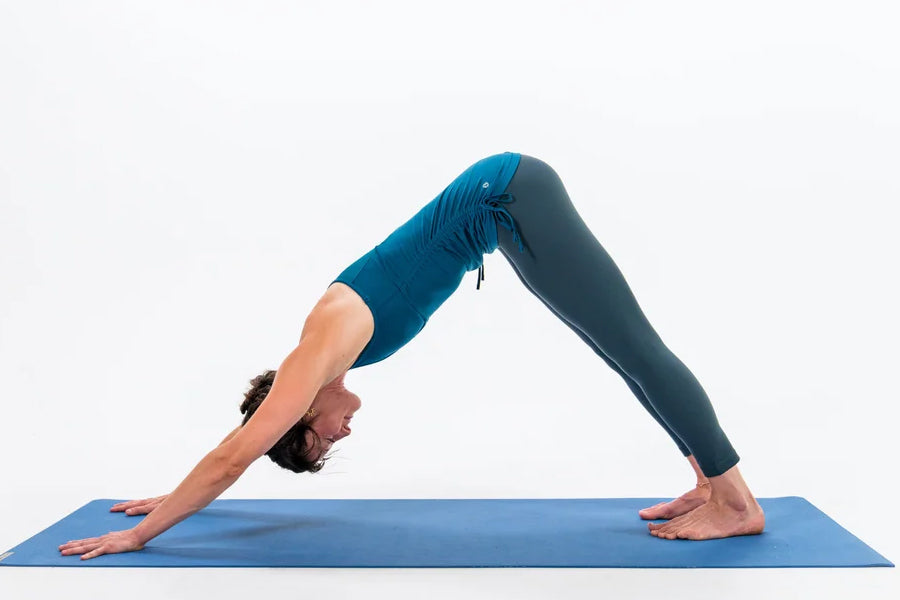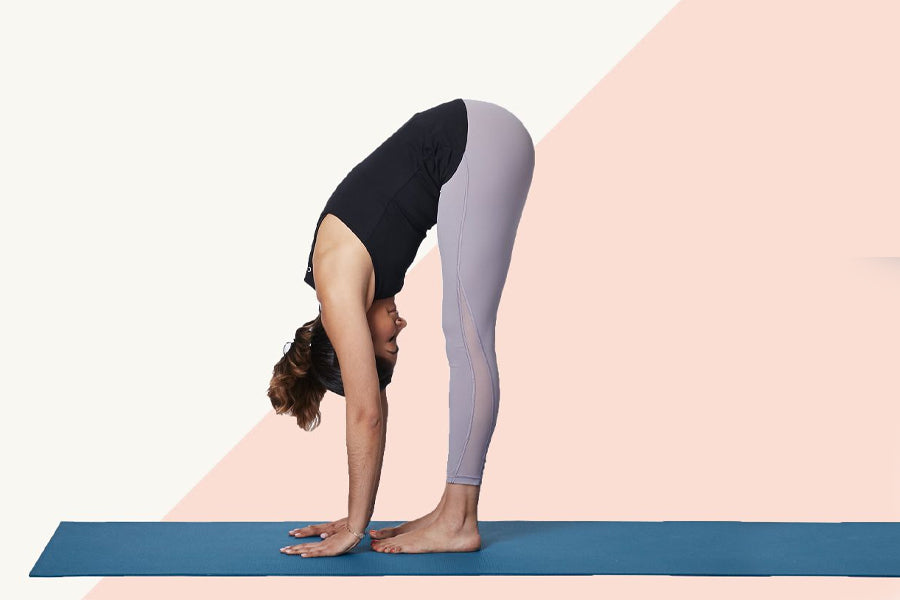Warming up your muscles before workouts protect you from injuries. All you have to do is take out 10 minutes from your routine to perform different poses. Especially when you are doing a weightlifting exercise such as deadlifting, it is compulsory to warm up the muscles for maximum muscle involvement.
Deadlifts are compound exercises that work your major body muscles such as core, back, glutes, and hamstrings. The exercise is great for building balance and strength in the body. A barbell is an essential piece of equipment that you will need to perform a deadlift. A perfect deadlift requires mobility of joints, muscle involvement, and complete focus.
Starting this exercise right after getting in the gym is not good. It would be best if you warmed up your muscles with effective exercises. Yoga is now highly popular due to its muscle warming effects, such as improving balance and flexibility. According to research, yoga poses can significantly increase your heart rate, best working for your warm-up routines.
Apart from that, yoga offers multiple health benefits such as:
- A sound mind-body connection
- Improving metabolism
- Increased muscle strength and flexibility
So, make a routine to perform some yoga steps to warm up your body muscles before doing a deadlift. Here are some of the best yoga poses that will help you get started with your deadlifts.
Related Article: How to Warm-Up for a HIIT?
1. Downward Dog

The downward-facing dog pose is a traditional yoga pose that you often practice during regular yoga sessions. This technique helps strengthen the muscles, build a better balance, and prepare your body for different exercises. It is extremely important to practice the pose with care and focus.
The main muscles that a downward dog poses targets are the lower body. You will feel a deep stretch in your hamstrings and calves muscles, further preparing you for your ultimate exercises. The downward dog is also an inversion exercise that helps blood circulation to the muscles.
Following are the step-by-step instructions to perform downward dog:
- Come onto your knees and hands. Your hands should be in front of your shoulders and knees directly under the hips. Turn your toes and spread your palms. While exhaling, lift your feet from the floor.
- At this point, your heels should be flat on the floor. Push your tail bone towards the ceiling.
- Exhale and avoid locking your knee joints. Keep your legs as straight as possible. Remember to engage your quadriceps and core.
- Make sure that you do not move your heels towards your hand to form a perfect inverted angle. If you feel your muscles are tight, then slightly bend your knees.
- Practice rhythmic breathing and come back to the original position.
2. Hip Bridge

The hip bridge is a perfect yoga pose that helps manage your chronic back pain. The hip bridge exercises also play an integral role in maintaining your posture by working on hip flexors. Your core muscles also get immensely challenged with such exercises. You can tone your leg and hip muscles if you perform it regularly.
No matter your fitness level, you can perform a hip bridge with much ease. The muscles targeted from a hip bridge are the core, hamstrings, and glutes. It is important to work this move safely, or there is a huge risk of harming your lower back muscles. Besides, people who have just recovered from surgery should not do this yoga pose.
You will strengthen your glutes with this yoga pose which will further assist in performing a deadlift with the correct technique. The instructions to do a hip bridge are below:
- Find a safe place and lie on the floor with your back and legs straight. Your arms should be on your side.
- Now, while exhaling, lift your hips from the ground.
- Your feet should be flat, and make sure not to lift them.
- Your knees and shoulders should make a straight line.
- Your core should be tight, and try to pull it towards your spine.
- Do not lift your neck and place your hands on the side.
- Hold the position for almost 20-30 seconds.
- Return to the original position carefully and smoothly.
3. Forward Folds

Forward folds are an extremely effective yoga pose that helps you deal with stress and calms your nervous system. The forward folds also help stretch your hamstrings, glutes, and calves, apart from the calming effect. The pose may also help you to work on improving your digestive health.
It is extremely important to practice your breathing while doing this pose. The pose mainly stretches your hip flexors, hamstrings, calves, and lower back. You often feel tightness in these muscles because of sitting all day. Practicing this pose will help you relieve the tightness and soreness in these muscles. You can also bend your knee slightly if you have difficulty performing the pose.
The forward fold pose seems easy, but you need to learn the proper technique to perform the pose. You can do this pose by following these instructions:
- Stand straight with your core and glutes engaged completely. From an overhead hand position, bring your hands down and fold from the level of hips.
- Your fingertips should be in line with the toes. You also need to press your palms to the floor if you can. Engage your quadriceps by drawing them up. Allow your head to hang for a while.
- Stay in this position for 20-30 seconds. Inhale while coming up and engage your core muscles while rising.
4. Straight Leg Stretch

If you are looking for a perfect pose that gives you a deep stretch and, at the same time, prepares your muscles to do deadlifts, then a single-leg stretch is the perfect exercise. You will also feel a challenge in your abdominal muscles because, in this exercise, you have to contact them to practice a perfect movement.
Your hamstrings often get tired due to various activities such as walking or running. The exercise also helps in warming up your muscles perfectly before the exercise. The straight leg stretch also helps in improving joint mobility and flexibility in the muscles.
There are many variations to perform a straight leg stretch, such as quad stretch or inner thigh stretch. You can practice any of this at your convenience. However, to do a perfectly straight leg stretch, you should follow these instructions:
- Lay flat on the mat, and extend your legs towards the ceiling. Curl your upper body slightly from the mat with your abdominals contracted.
- Grasp your right ankle and while inhaling, pull your leg towards you. If you cannot hold it from the ankle, you can hold it from the level of your knees. Your other leg should maintain a proper angle. If you want to make your move challenging, lower it a little.
- Switch legs and remember not to stress your neck.
5. Eagle Arms

To do the eagle pose, you need a conscious connection with your body along with your body strength. The pose makes sure to improve your balance completely as it requires the movement of major muscle groups. Many of you might face a problem while doing an eagle arm due to stiffness in your muscles. It becomes easier with time and with continuous practice.
There are many benefits of doing an eagle arms pose. It strengthens your calves, thighs, glutes, and even ankles. The pose also works on your digestive health and improves blood circulation within the joints. You also work on building your arm strength and focus with the help of an eagle pose.
It is better to do an eagle pose under expert supervision to avoid any risk of injury. You can follow these instructions to do the exercise:
- Begin the pose by transferring your weight to the left leg. Lift your right foot from the ground and cross it over your left thigh as high as you can.
- With that, you need to wrap your right ankle over your left calf.
- Now bend your arms and wrap your left arm onto your right at the elbow level.
- The next step is to wrap your right forearm over your left forearm.
- Lift your elbows to the level of your shoulder. Your spine should be straight and core engaged. Hold for some seconds and do it five to six times.
- Do the same on the opposite side.
6. Sumo Squat

Sumo squat is a challenging variation of a normal squat. It is an effective exercise to strengthen your lower body. You need to follow a proper squat technique to gain the most benefit out of it. Sumo squats also help you to work on your balance and coordination.
It is a common technique to practice in sports and rehabilitation centers. The muscles that get worked with a sumo squat are hamstrings, glutes, calves, and even inner thighs. It is a perfect movement to warm up your muscles before doing a deadlift. Your feet are slightly wider in this position, which makes it challenging.
If you face a problem in doing a sumo squat, you can practice it by adjusting the angle of your legs. The following steps will help you to master the sumo squat:
- Stand with your feet wider than hip-width apart. Your toes should point outwards at an angle of 45 degrees.
- Inhale and push your hips back and lower your body at the knees level to do a squat position. You need to engage your core and glutes at this point.
- While exhaling, return to the original position and distribute your weight evenly to your heels.
Important Tips for Yoga

Practicing yoga movements can make your body flexible. It will also affect your mental, digestive, and mind-muscle connection. If you are new to yoga, then during your first session, you might need an instructor by your side. Besides, you need to follow these tips to make your yoga sessions healthy, productive, and effective:
Invest in a mat: The essential thing you need to do is purchase a quality yoga mat. DMoose thick yoga mat has an anti-slip and sweat-resistant surface, making your exercises smooth. It is also thick, protecting your lower back muscles from excessive stress.
Start slow: You need to improve your mindset while doing yoga. Rushing things will not benefit you as you may end up harming yourself. So, the important thing here is to give yourself some time and start slow to master the technique.
Focus on breathing: The way you breathe during yoga has to say a lot about you. One cannot emphasize enough the significance of breathing during yoga. Focus on your breathing so that you can practice it healthily.
Wear comfortable clothes: Your clothing should easily follow the routine. Yoga stretches your body, so wearing a tight suit here might become a problem for you. Invest in quality clothing to get the best results.
Listen to your body: Yoga challenges the flexibility of your body. Some of you might not do it properly during the start. It is necessary not to push yourself beyond your limits. Listen to what your body has to say. You will get better with time.
Conclusion
Warm-up exercise prepares you for your workout. Whether you are a cardio lover or into lifting weights, one common thing in all exercise types is to spend some time warming up your body. You can significantly reduce the risk of injury to almost zero if you do some simple exercises to warm up.
Yoga poses work on your flexibility and mobilize your muscles, which helps improve your entire exercise form. You will see a visible difference in your workouts because of a quick and effective warm-up session. It increases your stamina endurance level and, more importantly, protects you from accidents.
Article Sources
- Cowen, Virginia S., and Troy B. Adams. “Heart Rate in Yoga Asana Practice: A Comparison of Styles.” Journal of Bodywork and Movement Therapies, vol. 11, no. 1, Jan. 2007, pp. 91–95. ScienceDirect, https://doi.org/10.1016/j.jbmt.2006.08.001.











